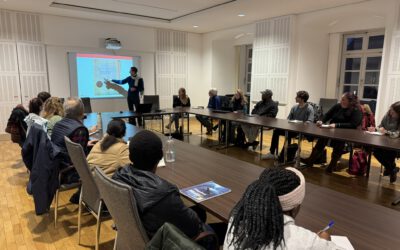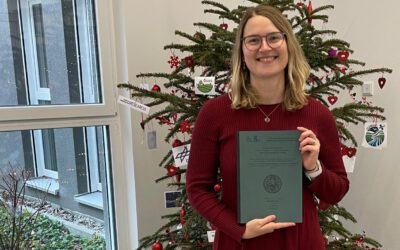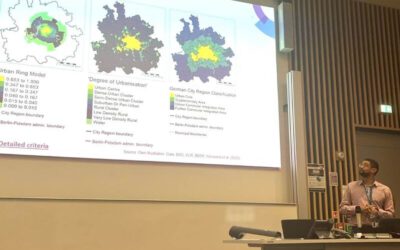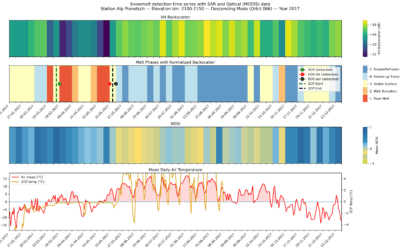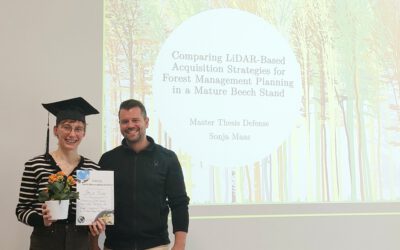Today, our EAGLE student Lallu Nikerthil Prathapan defended her master thesis successfully. The master thesis is titled: “Revealing Inconsistencies in Population Datasets in Refugee and IDP Camps”.
Here is the abstract of the thesis: Accurate gridded population estimates for refugee/IDP camps are crucial for ensuring the humanitarian response is data-driven, fair, and effective. This thesis compares and quantifies the population estimates from four global gridded population datasets–GPW-V4, GHS-POP, WorldPop unconstrained and constrained– for 210 refugee camps in Nigeria against the survey data from DTM. The analysis unveils significant inconsistencies, quantified through RMSE, AE, MAPE, and relative ratios, with 94.76% of the camp population underestimated. WorldPop constrained which uses building footprint data to constrain the population to regions with buildings, demonstrated relatively better accuracy with the lowest RMSE, AE, and MAPE (6759, 3152.95, and 89.48% respectively), however still exhibited an underestimation for 90.45% of camps, suggesting poor reliability for the refugee population in its current form. GPW-V4 and WorldPop unconstrained were found to be the worst datasets with large error values in the dynamic refugee population estimation by underestimating 99.04% and 97.62% of camps respectively. Variations in performance were also highlighted through further analysis between formal and informal and across different shelter types which also showed severe underestimation by all the population datasets. WorldPop constrained and GHS-POP, mostly performing well with smaller errors in all categories. To further explore reliable datasets or proxies for human presence in refugee regions, this study also examines building footprint datasets (VIDA [combination of Google and Microsoft], Google-V3, Microsoft, and OSM). VIDA showed the highest aggregated building count followed by Google with both datasets having better granularity. Even though Microsoft building counts were fewer, it correlated better with the survey household count, with its satellite imagery aligning with the survey period and usage of the Nigeria-specific dataset. VIDA again effectively represented the refugee spaces and areas with higher median values for metrics of square meters per household and persons with higher building coverage areas. OSM had the least representation of spaces and building count due to its incompleteness. Overall, this study reveals the inconsistencies in population datasets and the representativeness of building footprint datasets in refugee/IDP camps. The study also suggests utilizing building footprint datasets with precise timestamps, having regionally specific coverage where available, and combining multiple sources (like VIDA) along with survey data from IOM DTM as ground truth can significantly improve the accuracy for population datasets and enhance their relevance for population modelling and planning in refugee settings.
Her master thesis was mentored by our DLR colleagues Dr. Marta Sapena and Dr. Matthias Weigand. Prof. Hannes Taubenböck was the supervisor of the thesis.
This work also relates to other research studies in the thematic research direction carried out at EORC and DLR on refugees, IDP camps, migration and population assessment. Please see here for further reading:
- https://www.mdpi.com/2220-9964/12/4/175
- https://www.tandfonline.com/doi/abs/10.1080/13658816.2023.2189724
- https://www.sciencedirect.com/science/article/pii/S030645732400030X
- https://onlinelibrary.wiley.com/doi/full/10.1002/psp.2732
- https://www.sciencedirect.com/science/article/pii/S0034425718300312
- https://journals.plos.org/plosone/article?id=10.1371/journal.pone.0274504
- https://www.sciencedirect.com/science/article/pii/S1569843224000852
- https://www.nature.com/articles/s41597-022-01780-x
- https://www.sciencedirect.com/science/article/pii/S0143622822001916




